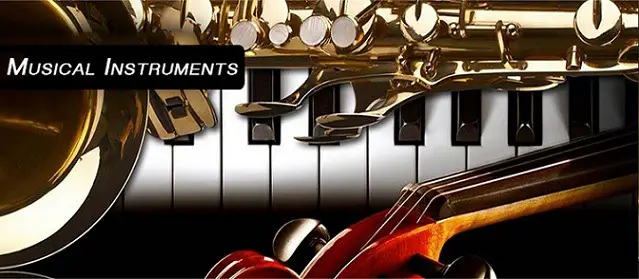
Musical Instruments buying guide: Playing a musical instrument keeps you happy and offers several benefits; if you are the more creative type, you can even compose your own songs. However, quality music instruments can be expensive. Here’s how to save money on music equipment without compromising on quality.
Introduction
While not everybody knows how to play a musical instrument, there are many who wish they could play a instrument. Despite the considerable costs (of buying an instrument and taking music lessons), most parents are eager that their children learn music.
As per Statista, over eighteen million Americans play a musical instrument. Another report says that 54% (more than one in two households) have a member who plays a musical instrument.
And the more popular musical instruments, as per FirstTutors are: Electric guitar, Keyboard, Piano, Guitar, Drums, Violin, Saxophone, Flute, Cello, Clarinet (there are many more musical instruments out there).
Playing a musical instrument is fun and provides several benefits (if you manage to learn to play it of course). But even before you get down to taking music lessons, you need to first buy a musical instrument on which you can practice your music lessons.
If you’re an adult looking to buy a musical instrument in order to take music lessons, or are parents and want to buy a musical instrument for your children, you will find the following few paragraphs useful; it tells you how to buy a musical instrument, or at least get access to an instrument so that you can practice.
Types of Musical Instruments
Musical instruments can be categorized depending on the way they generate sound. All musical instruments fall under one of the following – string, wind, percussion and keyboard, though there may be further divisions and sub-divisions.
Here are a few examples:
- String instruments include guitars, violins, ukuleles and cellos.
- Wind instruments include pipes, sax, clarinet, flute and such other types.
- Drums, bongos, cymbals and bells are percussion instruments.
- Keyboard instruments include pianos, harpsichords, organs and accordions.
While these are the more commonly played musical instruments, over thousand musical instruments are available across the world, including folk instruments.
Read: Which Music Instruments are easier to learn?
Electronic Musical Instruments
While electronic music refers to recording work done using computers, electronic musical instruments are music instruments that do not produce the sounds acoustically.
The words electronic and electric are also used interchangeably used nowadays; though there are technical differences between the two, for all practical purposes the two are assumed to be the same.
The word ‘electronic’ (or digital) is more commonly used with music keyboards and pianos, whereas the word ‘electric’ is more commonly used with guitars, violins.
The theremin is widely regarded as the world’s foremost electronic musical instrument, and today almost every music instrument has an electronic/electric version of it.
How do Electronic Instruments make sound?
Two features are common to electronic music instruments:
- Electronic instruments have to be heard over speakers. They are usually connected to external amplifiers with built-in speakers. Instruments such as keyboards have the amps/speakers built-in the instrument itself.
- Electronic instruments use Using a process called synthesis, they imitate acoustic instruments or create their own noises (in most cases they use pre-recorded samples of acoustic instruments).
A computer is not really a music instrument. A computer is more of a music player (similar to an mp3 player or radio); it’s useful for playing music, but it’s not really a music instrument on its own.
You can connect a music instrument to a computer to do recording work though.
But you can definitely use virtual instruments (virtual online piano and other instruments) that lets absolute beginners take a look at the layout of instruments, and how notes sound on the various instrument.
You just have to load the app and use your computer keyboard to click notes. But you cannot play songs on it, like the way you do on a proper music instrument.
Read: Unique Electronic Music Instruments
Buying Guides
- Electric Guitars . Acoustic Guitars . Classical (Nylong-String) Guitars . Small Guitars (3/4 and 1/2) . Ukuleles . ALL Guitars…
- Violins . viola . Cello . Trumpet . ALL Band Instruments
General Things to Consider Before Buying a Instrument
Here are some of the things that you should take into consideration before choosing a suitable instrument:
- The age of the student: The child needs to have developed motor skills to be able to play
- The character/personality of the student
- Your interests, the kind of music you want to play
- The cost, the amount of money you’re willing to spend
- The practicalities involved (such as size, portability, maintenance of the instrument)
Most parents want their kids to learn to play a musical instrument, but it is also important to pick up the right instrument for your child.
There is an instrument for every personality, and a student is more likely to feel at home with certain instrument/s.
Here are some suggestions from experts on what instrument a child should play based on their personality and physical characteristics.
Piano
What experts like about the piano is that it is a great instrument to provide a solid musical foundation. However, the piano is suited to those who are in general quiet, thoughtful, inquisitive, intelligent, and analytical. However, extroverts, those who love to have people around, may not find the piano appealing.
It’s best if students start on the piano at a young age. The instrument is physically and mentally demanding and the adaptability of young children really helps them to learn to play the instrument.
Those who learn the piano also find it easier to switch to another instrument later on, if they wish to.
Violin
The violin is another physically and mentally demanding instrument and it’s best if kids start early on this instrument.
The violin requires the use of certain types of arm muscles, which is easier for kids to develop (it can be awkward for adults to acquire it later). However, it doesn’t mean that you cannot larn to play the piano later on; but you’re probably not going to be Itzhak Perlman.
Experts believe quiet, well-behaved children who are happy to be part of a group are more suited to a violin.
Percussion
For the restless child, playing the percussion could be the perfect outlet for that extra energy. Percussion includes instruments such as drums, cymbals, maracas, wood-block, drum kit, xylophone and timpani.
Trumpet
More suited to extroverted children – the bold, dominant and ambitious ones; it also requires good hand-eye coordination. The trumpet is usually played as a lead instrument.
Trombone
Artistic, quietly sociable and sensitive children usually enjoy playing the trombone. The trombone is even more fun if your child likes jazz.
Bassoon
When assembled, the bassoon is almost six-feet tall, so its not very easy to manage for a small child. Bassoon players generally tend to be responsive, outgoing, with a quiet sense of humor.
Oboe
The Oboe is an intricate instrument and requires players above average intelligence; some experts feel the oboe is ideal for the determined introverts.
Clarinet
Clarinet players like working in groups, but they are born leaders; they are bright, alert and sociable.
Flute
Flute requires good hand-eye coordination, and also requires strong lungs. While one would assume that flute players are the shy type (and many of them do enjoy their privacy), I have seen a lot of talkative players who play the flute well. So, experts seem to be divided here.
Bass Players
Bassists (and even bass guitar players) are usually mellow, and quite comfortable staying away from the limelight and are ok to hang out in the background.
Guitar
The guitar is suited more to the extrovert who loves to be around people, although the classical guitar can appeal to the introverts too. The steel strings can be a pain on the fingers, so start on nylon strings.
Saxophone
Saxophone is better suited for extroverts and is also a great instrument to develop your own unique style and for improvisation.
Declining Piano Sales but People Are Still Learning Piano
At the peak of piano sales, in the early 20th century, more than 360,000 pianos were bought every year. A fraction of it now gets sold.
The sales of these acoustic instruments have been declining for years, because:
- The cost of pianos is high (Grand piano can cost anywhere up to $100,000)
- Buyers are preferring the smaller, cheaper digital keyboard (easily fits in most apartments nowadays)
Interestingly, while the sale of the bigger pianos have gone down, more people are learning to play the piano.
It means the audience is there, its just that piano manufacturers/stores need to figure out how to market the pianos to them.
Whether its buying a piano for the next piano prodigy (someone who has started taking lessons, and is doing really well) or simply looking to upgrade, music stores have to target more such buyers.
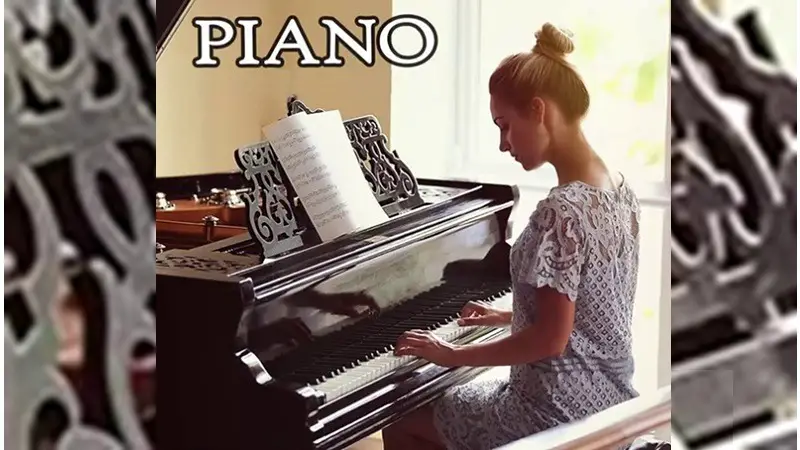
The Keyboard is Still the ‘King of all Instruments’
For die-hard piano fans, the keyboard instrument is the ‘king among all instruments’ (some even call it the ‘mother’ instrument). Some of the greatest and most loved music of the world has been written for the piano.
It’s an orchestra by itself encompassing both melody, harmony and rhythm with a range of seven octaves and more. No other instrument can match this. As a composer, the piano helps you cover the entire spectrum of the orchestra, all the octaves are visible, so it makes piano the best instrument for composition and arrangement.
Read: Here’s why piano is so important to music studies.
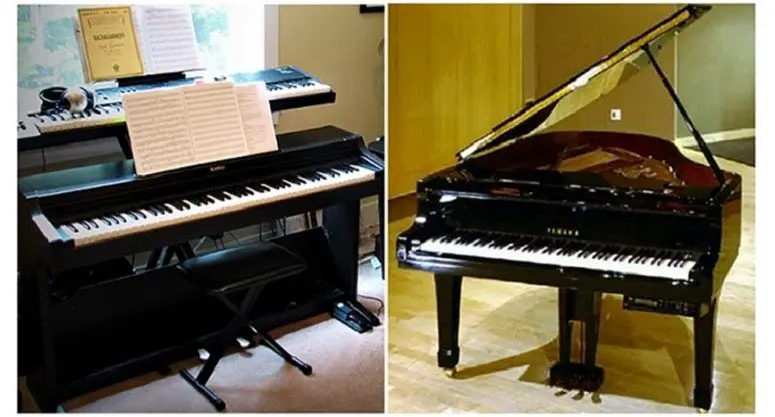
The piano shares its history with classical, jazz and modern music and is one of the popular instruments used for composition, along with its modern version known as the keyboard that is commonly used for music production.
Despite its history, the piano is very modern age, and is used by big performers / artistes across the board around the world.
The music keyboard may be popular with beginner music students but that is because of practical and economic reasons; electronic keyboards are also widely used in the music industry primarily because of space restrictions in the smaller studios (they do use lot of piano libraries (sounds) for their music production though).
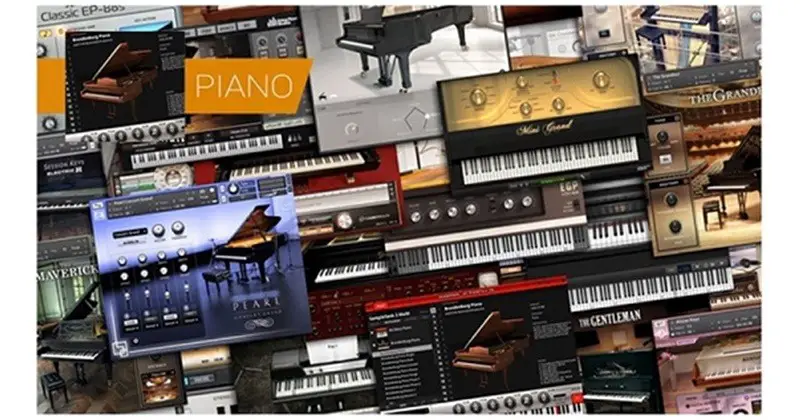
However, the piano is vastly different in look, feel and output, and that is why a lot of musicians prefer to uses a real acoustic piano for their recordings. It also looks quite inspiring, be it in the music classroom or in the recording studio).
Why piano-mania grips China’s children
Research Prices & Competing Stores
Do spend some time looking for instruments and their prices online; you can find some great deals online. Also, do check competing online stores. For instance, Amazon and Walmart are great for finding beginner instruments and toys for kids. Merchants like Amazon, zZounds, Musiciansfriends have wide range of instruments for pros. You will find great deals on guitars on sites like Guitar Center.
If you’re looking for an expensive instrument, do check it out at your local store as well. While you may not be able to get lower prices, you will be sure about the model that you have selected.
When buying online, see what accessories are included, and also factor in shipping costs.
Beginner Instruments for Students
The good thing about buying a new musical instrument is that you now have access to several products that are available for cheap. These are designed for beginners and offer great features, are functional, but don’t cost much.
Although a student or beginner instrument is a cheaper version of what professionals play, these ‘cheaper’ instruments are not sub-standard products.
In fact, a good student instrument comes with several features that assist students to progress faster and also to enjoy music making.
These are easier to play, offer less resistance (string instruments), is easier to blow (wind instruments), for the inexperienced player. For example, a lower action on a guitar makes playing easier for the young or inexperienced hands.
Most of these musical instruments are also available as a packages – comes bundled with useful accessories and Music books/DVDs so that you get everything to get started.
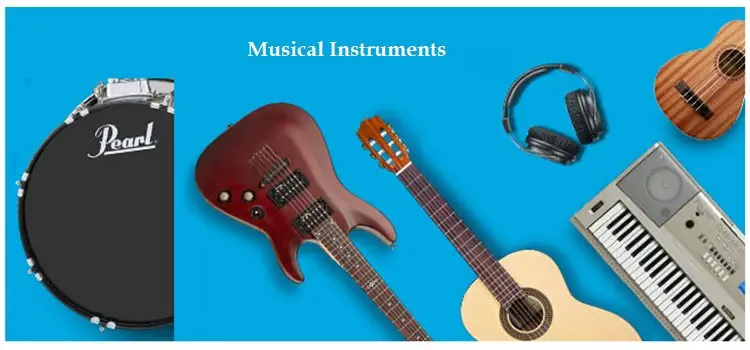
Are You Already a Player?
If you are already a player then you should avoid picking up the cheapest musical instrument.
Its best to go out and play all the instruments you can, and pick the one that appeals to your ears, suits your requirements and your budget (you should be open to increasing your budget a bit, in case you get hold of some really good musical instrument).
You should also go through the used gear/blemished gear section on top online merchants. You can find some really good instruments with minor bruises (but in perfectly working conditions) for good discounts.
Also Read: Buy used/blemished gear for cheap.
You can Buy, Rent or Borrow?
While everybody would love to buy a new musical instrument, in some cases its just not the practical thing to do.
You can always choose to buy a second-hand instrument.
Some music services (organizations contracted by the Local Authority to provide music tuition in state schools and at music centers) and schools offer instruments on loan to beginner students.
Then there are some (including some retailers) who operate rental systems. For a modest fee, they provide you a musical instrument for a trial period so that you get sufficient time to make up your mind.
The great thing about these options is that it allows you to get a feel of what is involved in learning, and how to take care of and maintain the instrument, before actually buying one.
In case you’re considering purchasing a second-hand instrument, make sure you check it for suitability, before it is used.
You Don’t Have to Buy the Most Expensive Instrument
Musical instruments can be expensive, especially if you are seeking the best option available on the market. In general, these can cost anything from $100 to over $10000. For example, a good Yamaha or Roland keyboard can cost almost $2000.
That is why used musical instruments are often a good choice, especially if you are learning to play a new instrument.
You definitely don’t have to buy the most expensive instrument out there. Choose something that fits your purpose. Feel free to consult a music teacher or a music shop.
Its important that the instrument is appropriate for your child, no matter how you intend to obtain it.
Most young string players, for example, begin learning on smaller sized instruments as they feel uncomfortable playing full-sized instruments (too large for them).
For beginners it is advisable to invest in musical instruments in the lower price range. However, you also should keep in mind that learning on a sub-standard instrument can be demotivating and usually prevents progress.
Don’t Go Too Cheap
If you’re buying an instrument for a child, you can pick a cheap one but for a serious beginner you want something better. A $50 cheap guitar is unlikely to last long and may not sound inspiring. And if it breaks down, you will have to buy another one (basically you will end up spending more money than you would spend buying a quality, new guitar).
A quality instrument costs more but it saves money in the long run and it will make you practice more.
Use the Power of Social Media
Have a huge social media presence? Do you (or your friend) manage social media accounts for some school, college or charitable institution? If yes, you can post that you’re looking for a music instrument and ask for help.
You never know; one of your followers might want to sell an instrument. In some cases, they might even give it for free (you will have to collect it though).
Having a huge online presence can help you find help in the online community.
Related: Global trends and outlook of the musical instruments market
Final Thoughts
The tips mentioned here should not only help you buy quality musical instruments, you should also be able to save considerable amount of money on your purchase. If you’re probably an experienced musician, you can put that money (savings) aside and use it to buy some other instrument/equipment in future.
The best thing to do is to talk to as many people as possible – other musicians, music teachers and music stores – on what brands and models to consider. These are the people who have the experience, who know about the various products, and you can trust them. The good thing for you is that there’s no shortage of great quality musical instruments and brands, so more often than not you will be spoilt for choice.
If you intend to learn on your own, start on a musical instrument you like, and then gradually master the instrument by joining music classes. If you’re not sure what instrument to start on, a keyboard can be a good choice. Electronic keyboards can produce all sorts of sounds ranging from guitar tunes to drum beats.
Related:
KeytarHQ editorial team includes musicians who write and review products for pianists, keyboardists, guitarists & other musicians. KeytarHQ is the best online resource for information on keyboards, pianos, synths, keytars, guitars and music gear for musicians of all abilities, ages and interests.
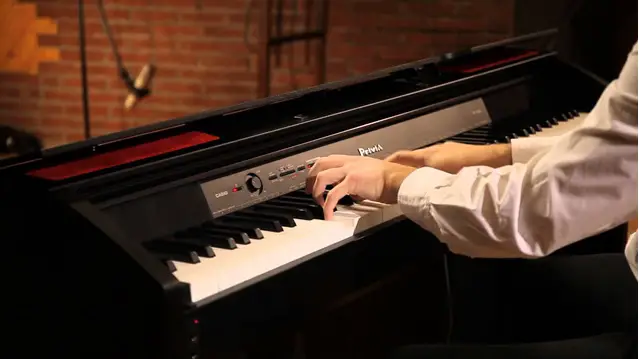
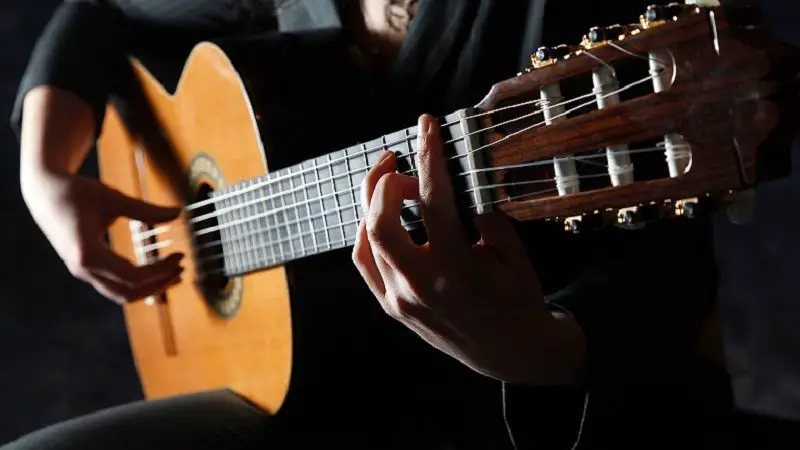
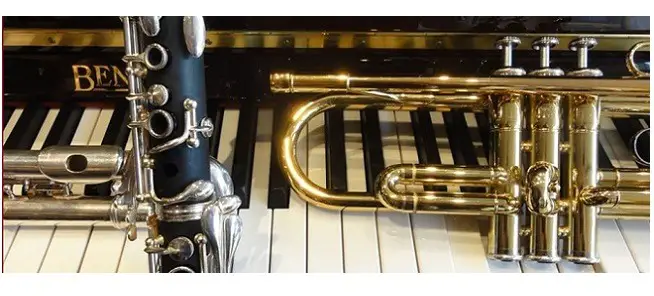
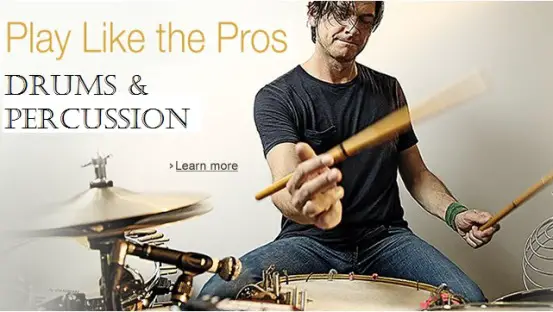


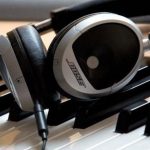
“Research states that participation in the arts help to improve test scores in attendance and behavior in school. So having this early start in elementary school really is beneficial to kids, they can get a head start”.
Elementary schools should approach the local government, NGOs, charitable foundation to fud their musical instrument needs. There are several foundations that provide money to buy additional band instruments for elementary schools so that all children get the opportunity to learn how to play a musical instrument. Some schools even allow students to take their instruments back home for practice.